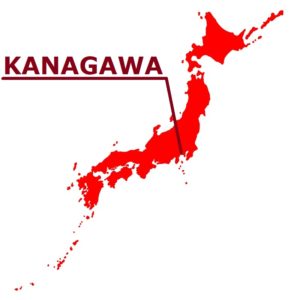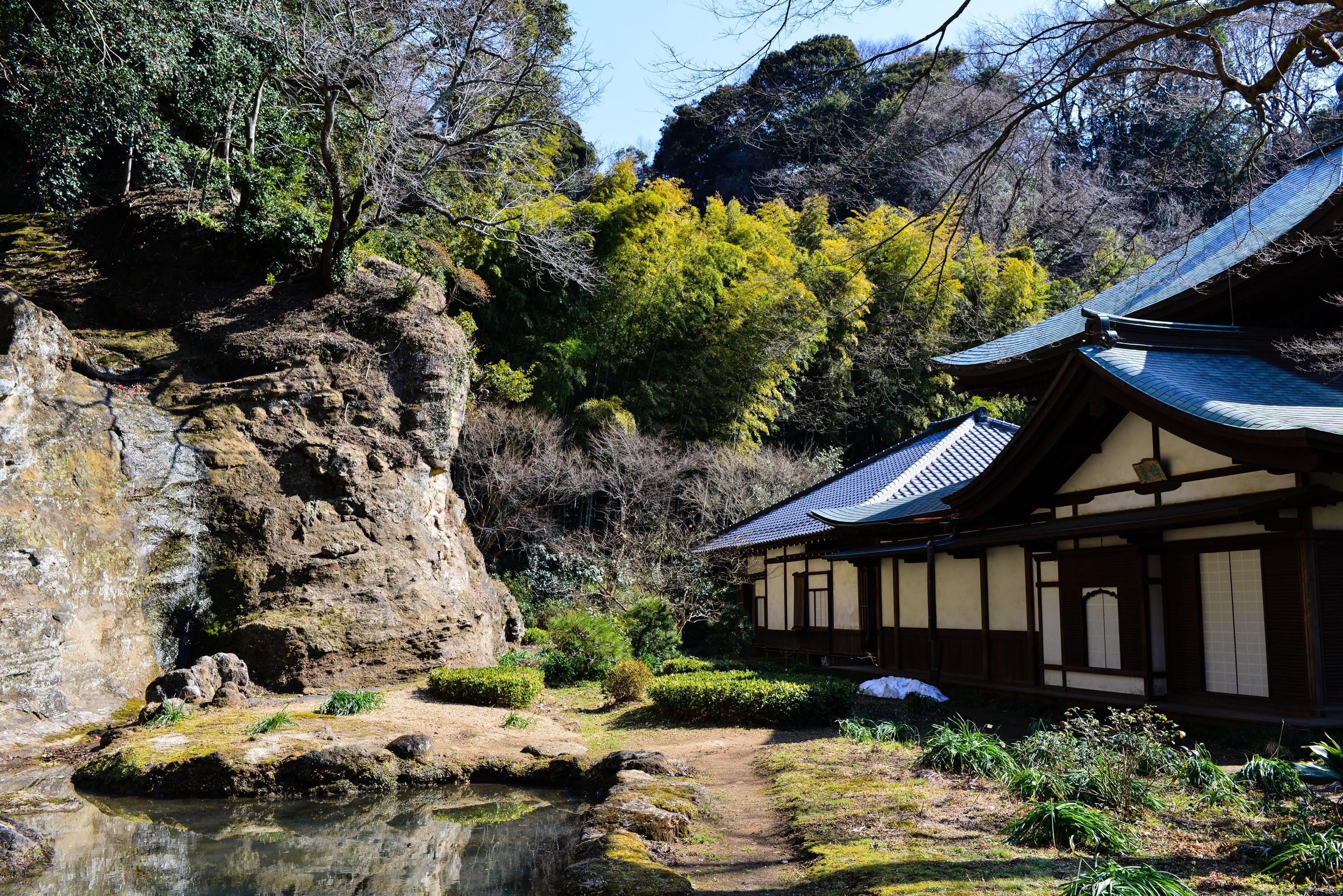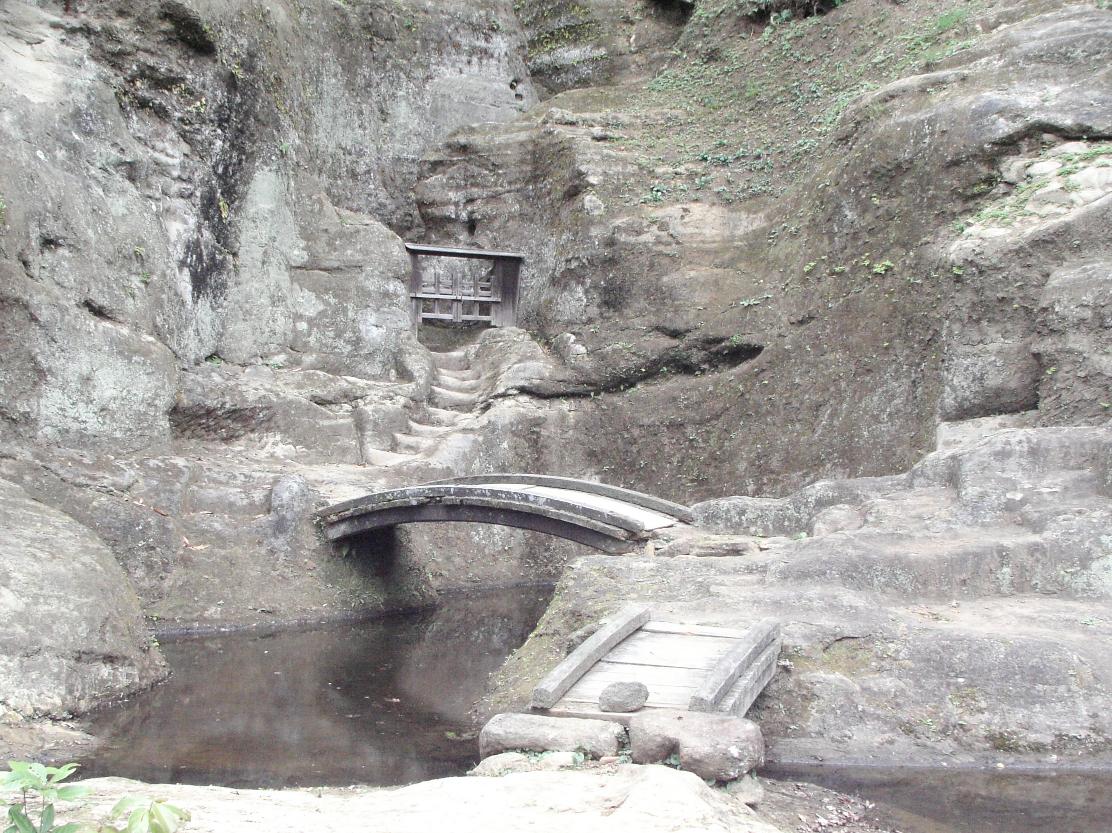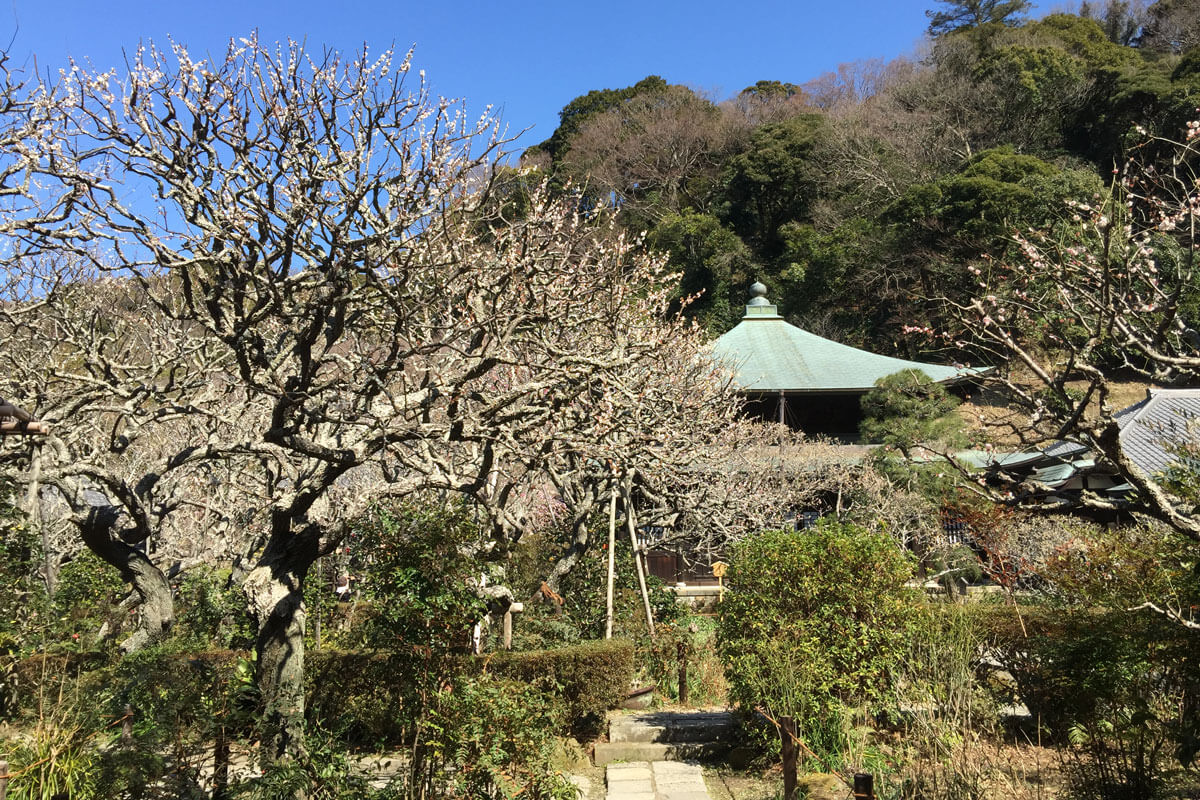
Five characteristics of the Kamakura temple are “Yato” (gate of valley), history, flowers, landscape, Buddha (Zen). A famous temple in Kamakura has not less than a few of these characteristics. And “Zuisenji” is one of the few temples that combines all these elements. Although not a spectacular sightseeing spot, visiting here will know all the charm of the ancient Kamakura temple.
“Yato” is a characteristic terrain of the Kanto region. It is a relatively gentle valley formed by the erosion of the hilly land. There is “Yato” where Miura hills were eroded also in Kamakura, and Zuisenji is located in “Yato” called “autumn leaves gorge” named because the autumn leaves are beautiful. The most beautiful Yato-like beauty in that temple is the approaching stone steps. Yato of Zuisenji is a prelude to a non-everyday space as if released from the daily bustle.
Zuisenji is also known as the “Flower Temple” in Kamakura, and you can enjoy flowers of the four seasons such as spring plum, summer confederate rose, autumn leaves, winter narcissus. Particularly early spring plum blossoms and beautiful autumn leaves are splendid. “Winter jasmine” is an old tree of plum in front of the main hall, it is a designated natural treasure in Kamakura city. In the local area, it is popular as a trendy plum tree that tells of the arrival of spring. “Winter cherry” which is said to be hand-planted by Mito Mitsuke in the front yard is also one of the highlights.
The biggest sight of Zuisenji is handled by Muso Soseki who also worked on the garden of Tenryuji Temple, Kokedera Temple and Saihoji Temple in Kyoto at the “Zuisenji Garden” behind the main hall.
The characteristic of the garden is “rock garden” created by sculptural method of rock. The landscape of “Tennyo-dou” dug in rock formations and “Zazen-kutsu” for zazen is wonderful.
This is the only garden in the Kamakura period that remains in Kamakura, where harmony of the landscape and the faith harmonize, you will be able to enjoy the beauty of the times.
Conservation of Historic Natural Features of Ancient Cities
Zuisenji Temple was founded in 1327.
Zuisenji Temple was established at the Kamakura period and there is the garden specified also as the National Scenic Beauty, and there are many highlights in which the air of the Kamakura period is given.
It has left the scene which is full of the emotion of the Kamakura period, so it is specified as “Conservation of Historic Natural Features of Ancient Cities” including the surrounding area.

A peculiar view of the world
The stone garden made by Muso kokushi (the most reverend priest). A peculiar view of the world spreads in Scenic Beauty Zuisenji Temple.
Muso kokushi, who had completed many gardens in early stages of the Muromachi period, shaved the base rock of the hill at the back and made the garden of the stone is the highlight.

Picturesque scenery suitable for such Zen sect temple
Momijigayatsu valley which is surrounded by hills on three sides serves as a natural fence, it is looking up at Mt. Fuji in the open western sky slightly, and is a borrowed landscape of Mt. Tendaisen and Mt. Kinpeisan.
On the ground of picturesque scenery suitable for such Zen sect temple, Muso kokushi made the garden which should also be called the rock garden.

Various flowers can be enjoyed through a season
Zuisenji Temple is also called “Floral Temple”, and various flowers can be enjoyed through a season. Especially a plum, a narcissus, and the autumnal maple leaves are beautiful.
The wild cherry tree which is said that Mitsukuni TOKUGAWA has planted and especially the autumnal leaves that spread on the mountain whole surface are popular.

The sense circled by plum can be tasted
Especially a plum is the greatest scale as temples and shrines in Kamakura. It is divided into two places and is the scale of total of about 120-130.
There are many white plums in the lower part of the precincts, and there are several rose plums in it. When taking a walk through the inside, the sense circled by plum can be tasted.

Information(Access, Price/Charge, Tel, Address, Official site, etc.)
| Name: | Zuisenji Temple |
| Address: | Nikaido710 Kamakura, Kanagawa 248-0002 Japan |
| Access: | Enoshima Dentetsu-sen Line “Kamakura-eki” Station (12 minutes by car) |
| Tel: | (+81) 467-22-1191 |
| Price: | 200 yen (Adult) 100 yen (Junior High School Student or Under) Please refer the official web page. |
| Official site: | http://www.kamakura-zuisenji.or.jp/ |
Leave a Reply